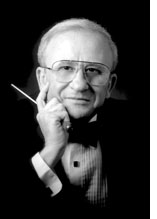By David Amos

SAN DIEGO — Together with Sharlene and David Berman, my wife Lee and I occasionally schedule visits to a different part of the Americas, and look for points of exploration, leisure, entertainment, edification, and encounters with distant friends. This was the case two weeks ago, when we flew to New York City, which became a point of departure for historic locations previously unexplored by us. I hope that you will find the first part of this brief travelogue interesting, and an inspiration to travel and explore.
In New York, we dined with my friend, composer Arnold Rosner and his family. The next day, while walking on 5th Avenue by the Eastern border of Central Park, we accidentally stumbled upon Congregation Emanu-El, where the Shabbat morning services were about to conclude. It happened to be a Bar Mitzvah celebration and the choir and organ treated us to a rousing rendition of the opening part of Leonard Bernstein’s Chichester Psalms. Afterwards, we met the rabbi and cantor, and received a personal tour of the facilities. This Reform temple is called the largest synagogue in the world, with a magnificent sanctuary, eight stories high, impressive artwork, a secondary chapel which would make most other synagogues sing Dayenu, and many other rooms for offices, meeting rooms, and classrooms.
Emanu-El houses the Religious School, Nursery School, the Skirball Center for Adult Jewish Learning, the Leon Lowenstein Sanctuary, and other facilities for congregational activities.
My personal connection to this synagogue is that ten years ago, I conducted the Royal Scottish National Orchestra in a recording which included a composition by a past Music Director at Emanu-El, Lazar Saminsky. He composed a weighty piece called The Vow; Rhapsodic Variations on a Dual Theme for Piano and Orchestra, the themes being extracted from the Kol Nidre prayer at the start of Yom Kippur. It was left in sketch only. We had it orchestrated, and together with the late pianist Barry Goldsmith, recorded it in Glasgow for commercial distribution.
We continued our walk northward, and spent time at the sumptuous Frick Collection, an art museum of European masterpieces, located on Fifth and 59th. The former home of Henry Clay Frick, was built in 1913-14, and opened to the public in 1935.Many artists represented there, in a most traditional setting, are names recognizable by connoisseurs and casual art aficionados alike: John Constable, Thomas Gainsborough, El Greco, Francisco Goya, Rembrandt, Renoir, Titian, Diego Velasquez, van Dyck, and many others.
Other art works on display included 18th Century French furniture,Limoges enamel, and Oriental rugs.
That evening, our experience was 180 degrees opposite to the sublime and spiritual unscheduled visit to Emanu-El. If you have never been to Sammy’s Roumanian Style Restaurant in the Lower East Side, it will be worth your time to do so, possibly only once, but you may look forward to encore visits. It is raucous, chaotic, and characteristically unsophisticated. The Jewish music, played by a one-man-band from Tel-Aviv, was lively, and loud enough to make the comparative sounds of most Bat-Mitzvah dinner-dance party bands a solemn hush. We had to literally scream at each other to communicate. But the service was friendly and prompt, and the servings were flavorful and beyond generous. Jew and Gentile alike were in the cramped dance floor, having a great time. The two hours spent there were enjoyable, but my ears kept ringing for hours.
Leaving the Big City, we drove to Harrisburg, Pennsylvania, and prepared to spend the next day in Gettysburg. If you are a fan of American History and the Civil War in particular, this place is a must-see location. We hired a private guide, who drove our rented vehicle, and gave us a detailed tour of Gettysburg and vicinity, stopping at the various battlefields, and giving us details that we could not possibly pick up on our own. A day spent in Gettysburg will give you a perspective you never imagined existed, not only of the battles and weapons, but the political pressures preceding the Secession, its main protagonists, the verbal debates on both sides, states’ rights, and how slavery played a part, and did not play a part in this sad, but significant chapter in our country’s short history.
The next day, on a much lighter note, we drove to the town of Hershey, Pennsylvania, did the obligatory tour of the Hershey Chocolate Factory, loaded up with souvenirs for friends and relatives, and overdosed on the wonderful sweets. A good dining place in the area is the high-end Harvest Restaurant, located at the historic and elegant Hotel Hershey.
Our next stop was Annapolis, Maryland, where we visited the U.S. Naval Academy. This was about the mid-point of our trip, and many more surprises were yet to come. In the next few weeks, I will share with you the continuation of this trip, which turned out to be a revelation in many ways, a mind-boggling discovery, and a slight disappointment in a surprising location.
*
Amos is conductor of the Tifereth Israel Community Orchestra. He may be contacted at david.amos@sdjewishworld.com